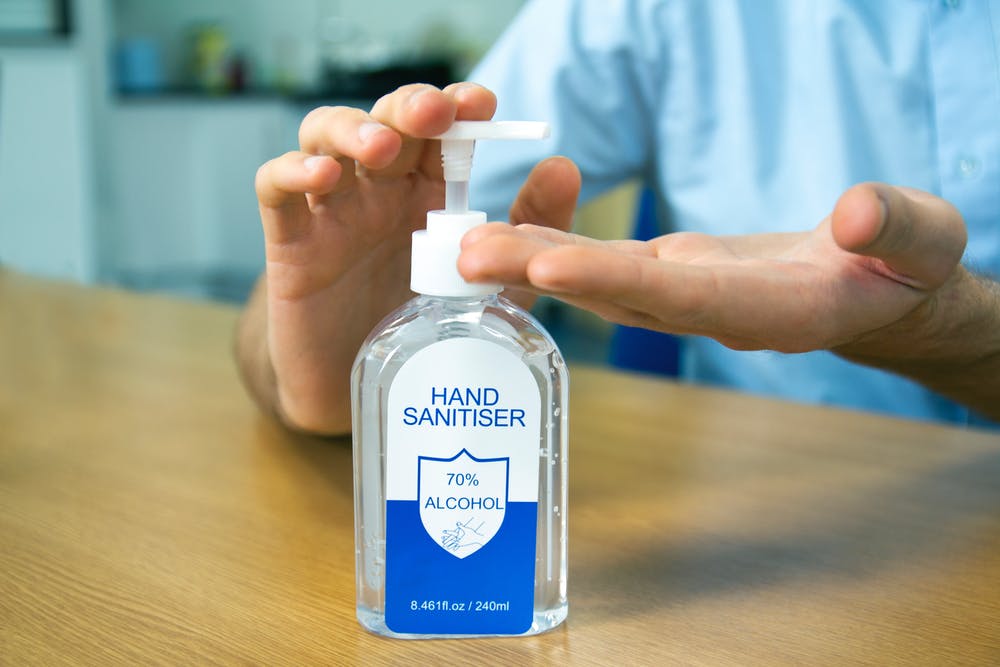Deep cleaning your home isn’t as straightforward as it may sound. Some areas need more attention than others, and germs tend to gather in places you might not expect.
Fortunately, there are steps you can take in order to ensure that you’re able to reach the dirtiest areas of your home.
Not quite sure how to begin? We’ve got all the info you need. Let’s explore everything you should keep in mind when cleaning and disinfecting your home.
1. Keyboards and Computers
As you might expect, keyboards and computers are a prime breeding ground for bacteria. Unfortunately, not many people tend to take them into consideration when cleaning their homes.
For example, ask yourself the last time you wiped down your computer keyboard, monitor, etc. Unless you do so regularly, you probably don’t at all.
In some circumstances, this could be one of the dirtiest areas of your home since many people don’t think about what they’ve recently touched before they sit down and type. So, it’s essential to remember that you disinfect these surfaces weekly (or more) depending on how often you use them.
2. Showers and Bathtubs
This may seem like an interesting answer since showers and tubs are used to wash away dirt, grime, and oils. After all, there’s a reason that stains and discoloration can affect showers and bathtubs over time if they are clean properly.
You may even discover that your drain no longer functions as efficiently as it used to due to buildup. This can then result in dirt, grime, etc. building up on the floor of your shower or tub, making it far less sanitary during use. Instead, it’s recommended to clean these surfaces on a weekly basis.
3. Handles and Switches
This is yet another area of your home that often isn’t viewed as a place where bacteria accumulate. But, handles and switches are often the first things that you touch in your home after you come in from outside.
This means that someone who recently shook hands with another person, used a gas pump, did yard work, etc. is now spreading this bacteria through their home. Even after you wash your hands, the bacteria remain on the surfaces, which causes you to spread it to other areas.
So, it’s highly recommended that you disinfect handles, switches, doorknobs every few days to ensure that they remain as clean as possible.
4. Handheld Items
Phones, remote controls, keys, etc. are all surfaces that serve as a breeding ground for bacteria. Like door handles and light switches, handheld items are touched consistently on a daily basis, which causes you to actively spread bacteria through other areas of your home.
This becomes increasingly true if you have a large number of people who live in your home or have frequent visitors. If any of these individuals are children, then the surfaces likely have far more bacteria than they normally would since children aren’t as proactive when it comes to quelling the spread of bacteria.
To clean electronic handheld devices effectively, you can pour rubbing alcohol on a cloth and lightly dab the surface in order to kill the bacteria. This will allow you to sanitize the item without damaging it.
5. Kitchen Counters
It should come as no surprise that kitchen counters are one of the dirtiest areas in your home since people are constantly putting their hands, elbows, etc. on the counter and facilitating the spread of bacteria. But, it’s also worth considering that bacteria can also spread based on what you cook.
Juices from raw meat, spoiled food, etc. that come in contact with kitchen counters could easily turn these surfaces into ideal locations for bacteria to multiply. In this scenario, though, the bacteria that is present can be particularly harmful, such as E. coli, Salmonella, etc.
So, it’s imperative that you prioritize properly cleaning your kitchen counters (as well as surfaces like drawer and fridge handles) to prevent any health complications from arising in the future.
6. Washing Machines
Like showers and bathtubs, washing machines are typically objects in your home that you would consider to be dirty. Many people overlook the fact that only the inside of the washing machine gets cleaned on a regular basis.
This means that all the bacteria present on dirty clothes, blankets, rugs, etc. is being transferred to the surface of the washing machine itself. This is particularly true for the handle, which is also often neglected during cleaning.
7. Sponges
As time goes on, substantial amounts of dirt and grime begin to collect in the pores of the sponge. In some cases, you may even find that your sponge begins to emanate a powerful odor as bacteria begin to accumulate. Oftentimes, this will have a musty smell to it, which can help you identify the source of the odor.
In general, it’s best to run your sponge through the dishwasher at least once per week. After about a month of using the same sponge, though, it’s highly recommended to replace it. Otherwise, you run the risk of spreading bacteria across surfaces that you are attempting to clean, such as dishes, silverware, etc.
Reaching the Locations With the Most Germs Can Seem Complicated
But the above information will make the process far smoother. From here, you’ll be able to ensure that you thoroughly rid your home of germs and leave it as clean as possible after you’re done.
Want to learn more about what we have to offer? Feel free to reach out to us today and see how we can help.


Recent Comments